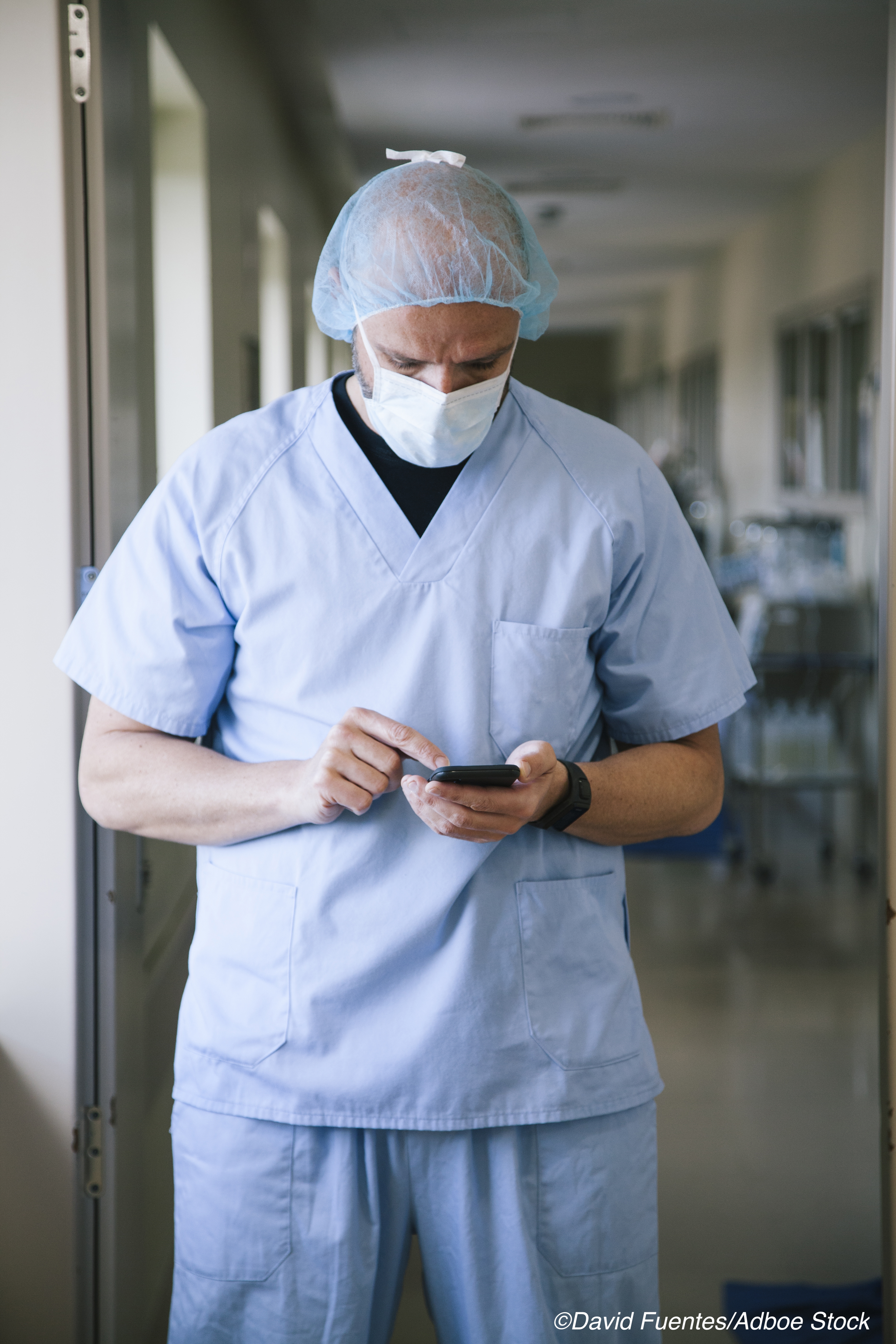
At the start of the Covid-19 pandemic, many hospitals required employees to report any symptoms they experienced associated with SARS-CoV-2 infection and directed symptomatic employees to seek follow-up testing. While such measures were taken out of necessity, according to Steven Horng, MD, MMSc, of Beth Israel Deaconess Medical Center in Boston, and colleagues hypothesized that symptom reporting may provide secondary benefits beyond infection control—employee attestations of symptoms could potentially serve as “syndromic surveillance to estimate the incidence and prevalence of infections in the communities where employees live,” they suggested in JAMA Network Open.
Horng and colleagues conducted their analysis to assess whether a daily employee symptom reporting tool used at the Beth Israel Deaconess Medical Center could assist in forecasting subsequent hospital admissions for Covid-19 in the communities where employees lived.
The study authors found that, among their study cohort of 6,481 hospital employees, an increased frequency of employee-reported Covid-19 symptoms at Beth Israel was associated with increased Covid-19 hospitalization rates across 10 network hospitals over the subsequent week.
“This cohort study found an example of syndromic surveillance, a tool of particular utility during pandemic conditions where decision making and health care resources need to be mobilized rapidly with imperfect and inconsistent information,” they wrote. “Although employee attestation data are not perfect, and in fact are both biased and not completely representative of the community as a whole, our results suggest that such an approach was useful for the purposes of actionable operational decisions in surge planning during a pandemic, specifically when more accurate data were unavailable.”
The study was performed across the 10 hospitals in the Beth Israel Deaconess HealthCare Network from April 2 through Nov. 4, 2020. The hospitals were numbered 1 through 10 according to the number of unique employees living in that service area who filled out the symptom attestation during the study period—hospital 1, a tertiary, academic, teaching hospital in Boston, had the most employees living in its service area, while hospital 10 had the fewest.
Employees were included in the analysis if they were employed at hospital 1 and were working on-site; self-reported symptoms were recorded by the institution when employees worked on-site for a given day. Symptom reports were collected using a daily automated text messaging system, which messaged employees each morning and asked them to complete a daily symptom monitoring assessment. Employees were first asked whether they were working on-site that day; if they said yes, they were prompted to fill out the symptom reporting form, which asked them if they were experiencing any of twelve symptoms related to Covid-19.
The study’s primary outcome was the mean absolute error (MAE) and weighted mean absolute percentage error (MAPE) of the seven-day forecasts of daily Covid-19 hospital census across all 10 hospitals. “We note that the primary outcome measure is not the mean of each individual hospital’s MAE, but rather the MAE of the network as a whole,” the study authors explained. The secondary outcome was MAE and weighted MAPE of seven-day forecasts of weekly Covid-19 positive cases within each of the 10 hospitals.
Of the 6,841 employees included in the analysis, 5,120 (74.8%) were female, 3,884 (56.8%) were White, mean (SD) age was 40.8 (13.6) years, and mean (SD) time of service was 8.8 (10.4) years.
“The study model had a MAE of 6.9 patients with Covid-19 and a weighted MAPE of 1.5% for hospitalizations for the entire hospital network,” the study authors reported. “The individual hospitals had an MAE that ranged from 0.9 to 4.5 patients (weighted MAPE ranged from 2.1% to 16.1%). For context, the mean network all-cause occupancy was 1,286 during this period, so an error of 6.9 is only 0.5% of the network mean occupancy. Operationally, this level of error was negligible to the incident command center.”
In other words, the forecast model was reasonably accurate in predicting subsequent hospital demand.
The study authors found that “At hospital 1, a doubling of the number of employees reporting symptoms (which corresponded to 4 additional employees reporting symptoms at the mean for hospital 1) was associated with a 5% increase in Covid-19 hospitalizations at hospital 1 in 7 days (regression coefficient, 0.05; 95% CI, 0.02-0.07; P<0.001).”
Horng and colleagues noted that while there are models that can predict Covid-19 prevalence and deaths farther into the future, they sought an approach that “required no knowledge or estimation of ongoing policies, was highly localized to a specific area, was designed to estimate only into the immediate future (1 week), and forecasted hospitalizations, not deaths. Although our method restricted our estimation capability to the near future (7 days), which may not be sufficient for state-level policy decision making, a 7-day window is sufficient to activate initial hospital and network emergency surge protocols. For example, New York state has mandated hospitals have a surge and flex response plan to expand operational bed capacity by 50% within 7 days.”
They added that future analyses will look to incorporate other non-traditional data sources that may act as surrogates for community spread—for example, they noted that monitoring sales of over-the-counter remedies associated with management of Covid-19 symptoms could be useful.
Study limitations included that the estimate of Covid-19 daily hospital census represents the number of confirmed cases at each hospital, and thus the estimate relies on testing data; self-reporting of symptoms may be inconsistent across hospital employees; and the study authors only had access to symptom attestation records from hospital 1.
-
Increased frequency of employee-reported Covid-19 symptoms at Beth Israel Deaconess Medical Center in Boston was associated with increased Covid-19 hospitalization rates across 10 network hospitals over the subsequent week.
-
These findings suggest that self-reported symptoms among hospital employees may be useful for making actionable operational decisions in surge planning during a pandemic, specifically when more accurate data on infection prevalence are unavailable.
John McKenna, Associate Editor, BreakingMED™
The study authors had no conflicts of interest to disclose.
Cat ID: 190
Topic ID: 79,190,503,932,730,933,190,926,192,927,151,928



Create Post
Twitter/X Preview
Logout